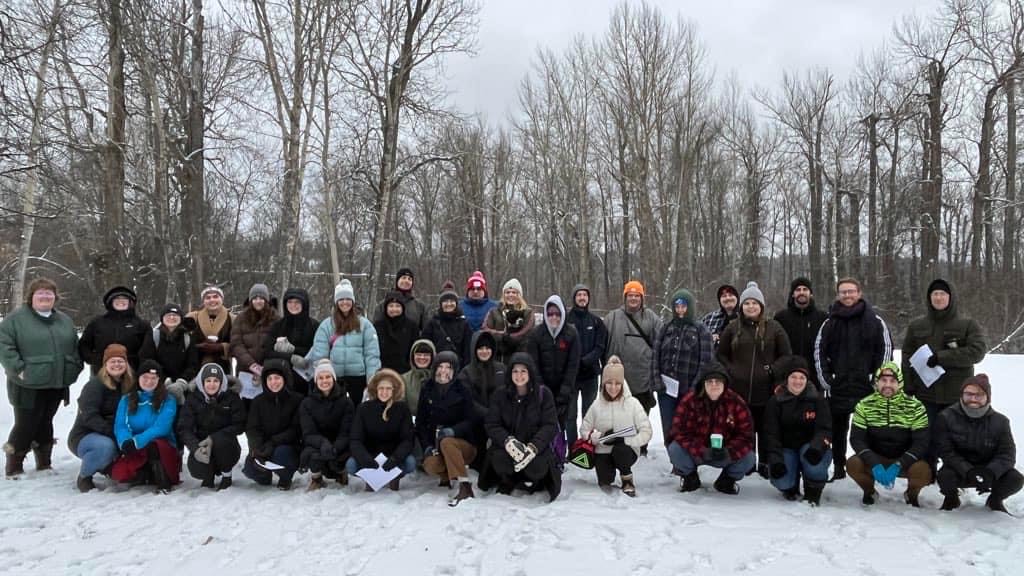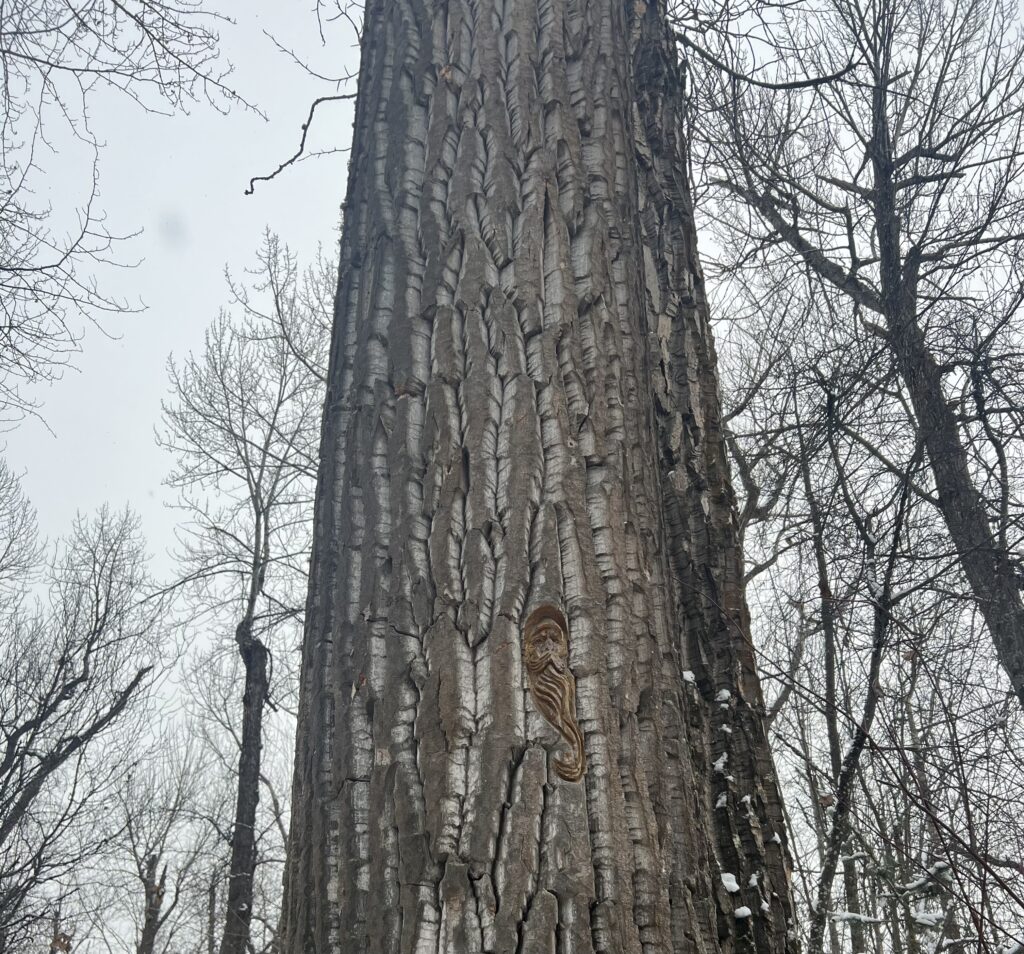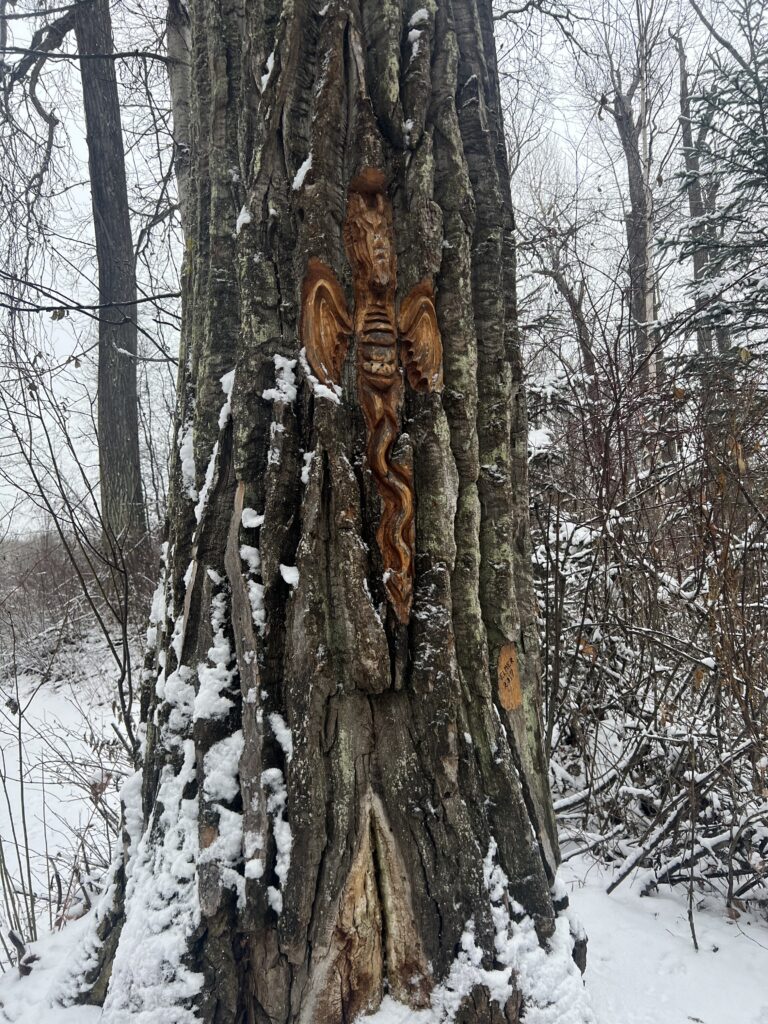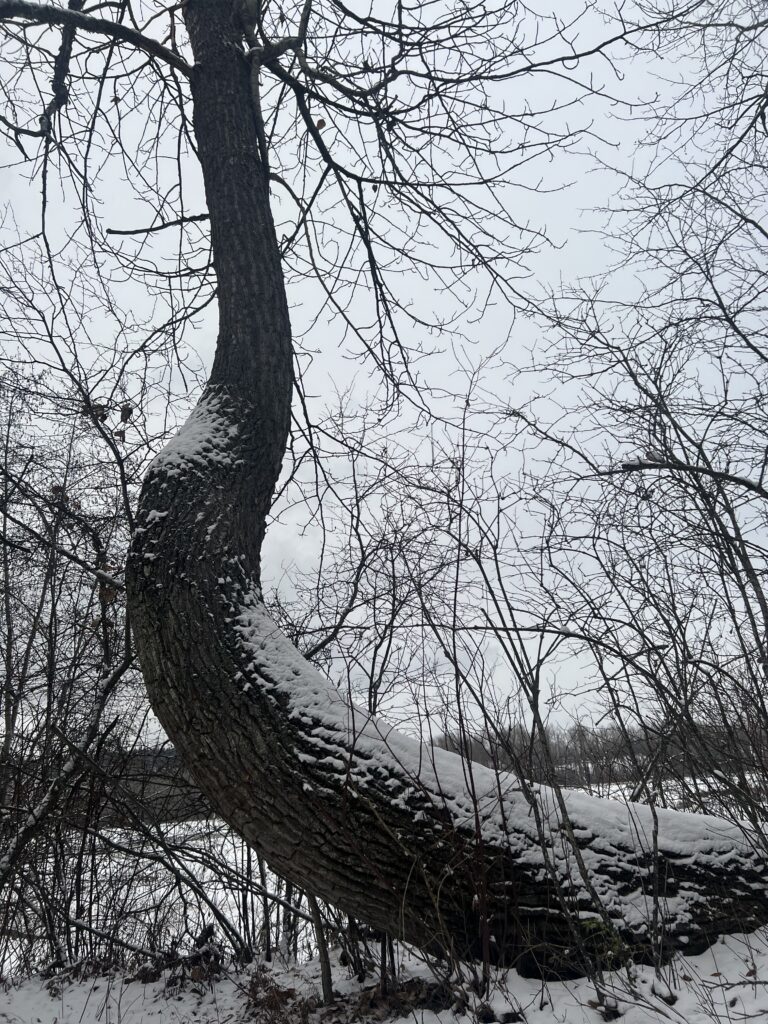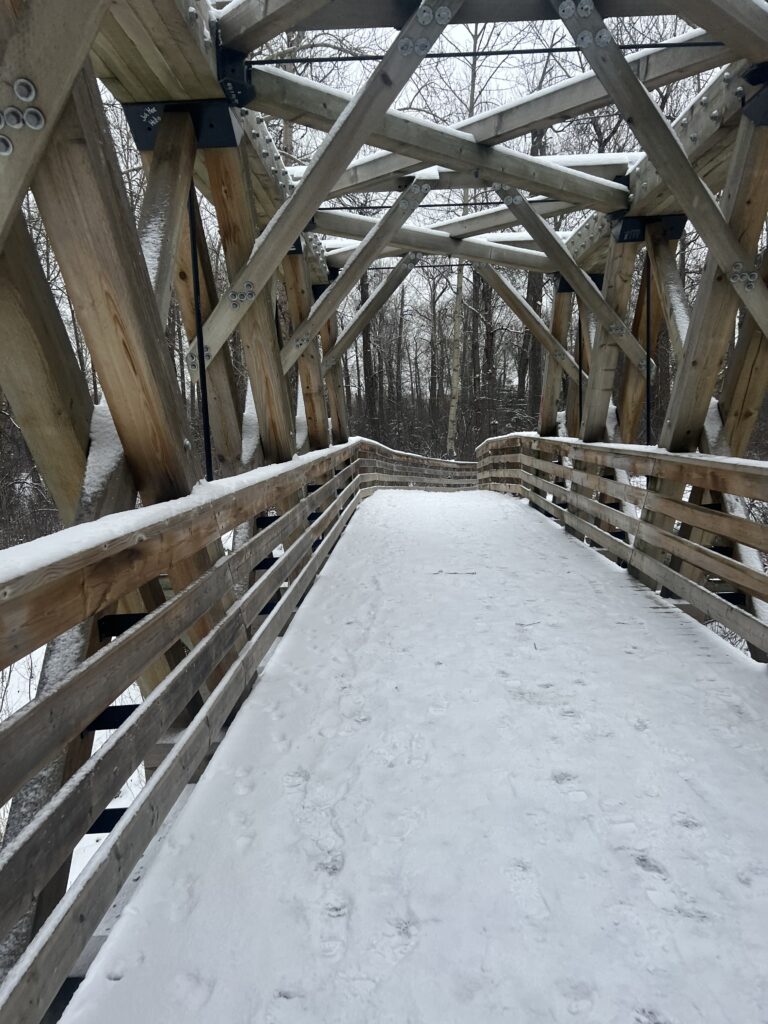Being outside in bad weather seems to be a pattern in this course. It does show that learning can still be done when you’re cold and not in your comfortable bubble that is the classroom. We went to Cottonwood Park which is a local park of trails next to the Nechako and Fraser rivers. I’ve been going to this park since I was very young. My family always loved going down to the river. We’d always throw rocks into the river, skip rocks, even learn about the environment around it. Thanks to my grandpa, he always has information about rocks and mountains. The paths that were there when I was kid are not all there anymore. They’ve been washed away from the river flooding. The farthest bridge had not always been there it used to connect with a path, but it washed away one year so they had to make a bridge. It’s not as fancy as the first one but it works.
This weather this time was cold winds and snow. We used the walking curriculum looking and focusing on elements that we would have missed or not have taken the time to see, especially in the winter weather. Movement, shapes, and faces are the walks we did. The movement that I saw was the clouds, the branches when the wind blew and how the branches grew above. Shapes was mostly in the trees. The branches created shapes in the air and there were more shapes that were man made. Faces were carved in the trees, were carved by a local artist Elmer Gunderson, who has been carving and sculpting for more than 25 years. So, if you don’t take the time to look around you may miss all these things. We also saw some ducks that started walking towards us. My group talked about do we lose the imagination do the ability to look for these as we get older or do, we not take the time to look for them? I think it’s both. We are always rushing and focused on other things we forget to take in the beauty that is the environment that we live on.
Learning from the land is educational but it also connects us back to where we live. We see things we might have missed on our own.
